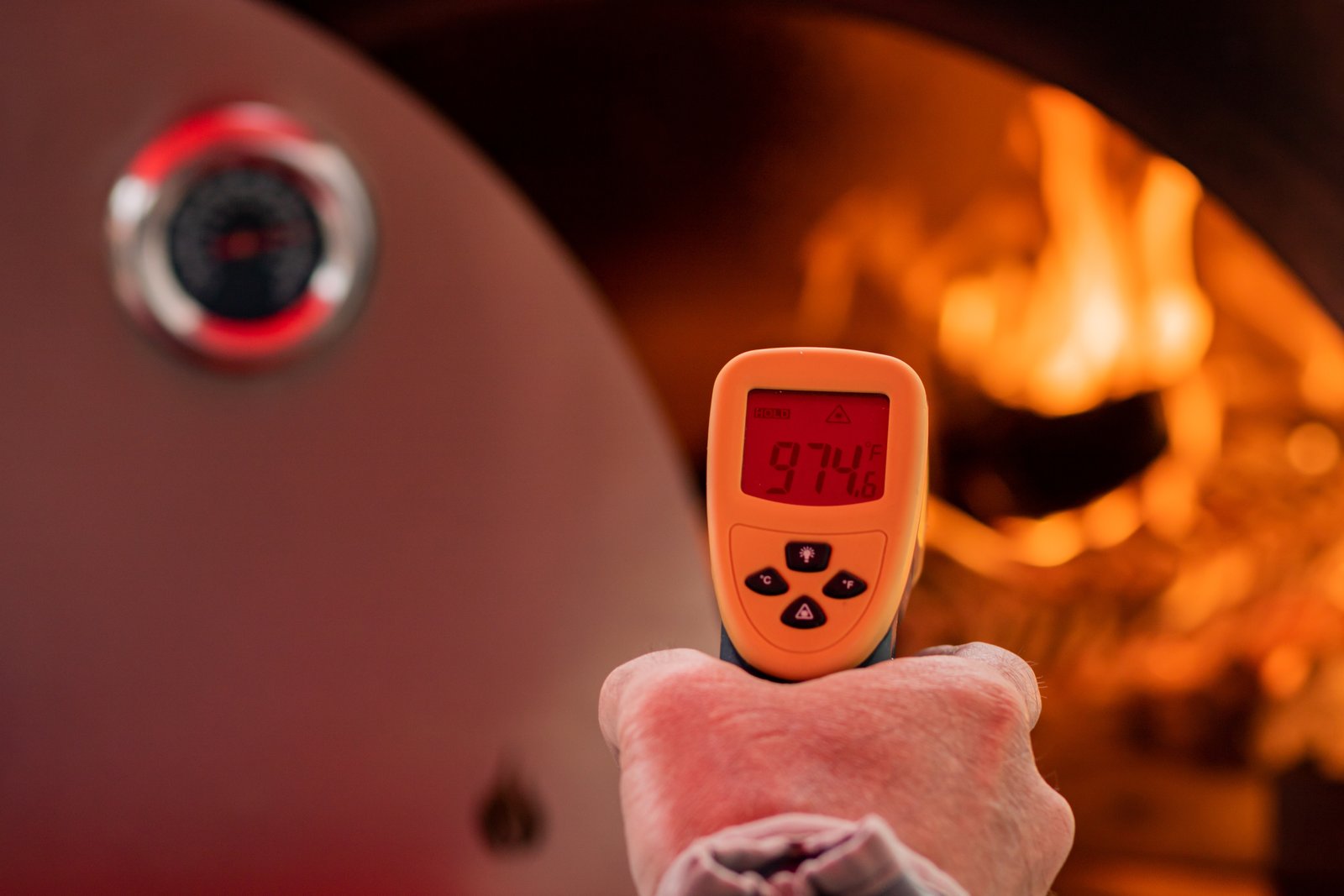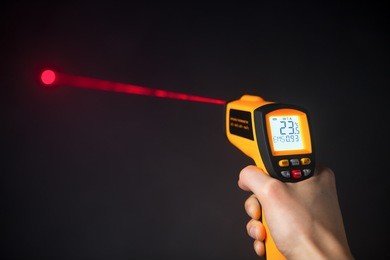Infrared temperature measurement, also known as infrared thermometer or infrared pyrometer, is a non-contact method of measuring the temperature of an object by detecting the infrared radiation it emits. Every object with a temperature above absolute zero emits infrared radiation as a function of its temperature. Infrared thermometers capture this radiation and convert it into a temperature reading without direct contact.
Infrared temperature sensor finds widespread use in various industries and applications, including industrial processes, food safety, medical diagnostics, and environmental monitoring. It offers advantages such as speed, non-contact operation, and suitability for measuring high temperatures or inaccessible objects. Infrared thermometers are commonly employed in manufacturing, quality control, HVAC systems, and even household thermometers.

Measurement theory of infrared temperature measurement
Infrared temp thermometer relies on the principles of blackbody radiation and the Stefan-Boltzmann Law, providing a non-contact method for determining an object's temperature based on the infrared radiation it emits.
The measurement theory begins with the understanding that all objects with a temperature above absolute zero emit electromagnetic radiation. According to the Planck radiation law, the intensity and distribution of this radiation depend on the object's temperature. The emitted radiation spans a range of wavelengths, and the peak wavelength is determined by the object's temperature, as described by Wien's displacement law.
The Stefan-Boltzmann Law quantifies the total energy radiated by a blackbody (a perfect emitter and absorber of radiation) as proportional to the fourth power of its absolute temperature. This law forms the basis for calculating temperature using infrared thermometers.
In practical terms, infrared temp sensor instruments typically use a lens to focus the infrared radiation emitted by the target object onto a detector, often a thermopile. The thermopile absorbs the radiation and generates an electrical signal proportional to the amount of received radiation.
The instrument then applies a series of corrections and calibrations to convert the electrical signal into a temperature reading. These corrections may account for factors like the emissivity of the object's surface, atmospheric conditions, and the instrument's response characteristics.
Emissivity is a critical parameter in infrared temperature measurement, representing the efficiency of an object in emitting infrared radiation. It ranges from 0 to 1, with 1 indicating a perfect emitter. Different materials have different emissivity values, and accurate temperature measurement requires knowing and accounting for the emissivity of the object being measured.

Application of infrared temperature measurement
Infrared temp meter finds extensive application across various industries due to its non-contact nature and the ability to rapidly and accurately assess the temperature of objects. Here are some key applications:
Industrial Processes: Infrared thermometers are widely used in industrial settings to monitor and control processes. They play a crucial role in manufacturing, ensuring that machinery and components operate within specified temperature ranges, preventing overheating or inefficiencies.
HVAC Systems: In the heating, ventilation, and air conditioning (HVAC) industry, infrared thermometers help assess the performance of heating and cooling systems. Technicians use them to identify thermal irregularities, optimize energy efficiency, and troubleshoot HVAC equipment.
Medical Thermography: In the medical field, infrared temperature measurement is employed for non-invasive monitoring of body temperature. Infrared thermometers are widely used in clinical settings for quick and hygienic temperature assessments.
Electrical Inspections: Infrared thermography is crucial for detecting hotspots in electrical systems. This preventative maintenance technique helps identify potential faults, loose connections, or overloaded circuits, reducing the risk of electrical fires.
Building Diagnostics: In construction and building diagnostics, infrared thermometers assist in identifying insulation gaps, detecting water leaks, and assessing the energy efficiency of structures. This helps in optimizing building performance and energy consumption.
Food Safety: In the food industry, infrared thermometers are used to monitor the temperature of food products during processing, storage, and transportation. This ensures compliance with food safety regulations and prevents contamination.
Automotive Maintenance: In the automotive sector, infrared thermography is employed for diagnosing engine and brake system issues. Technicians can quickly identify overheating components and potential malfunctions.
Firefighting: In firefighting, handheld infrared thermometers assist in locating hotspots during and after a fire. This helps firefighters ensure that the fire is fully extinguished and prevents re-ignition.
Research and Development: Infrared temperature measurement is integral to scientific research and development. It is used to study heat distribution, thermal properties of materials, and various thermal phenomena in laboratories.
If you are interested in our Infrared Temperature Measurement, feel free to contact us!

